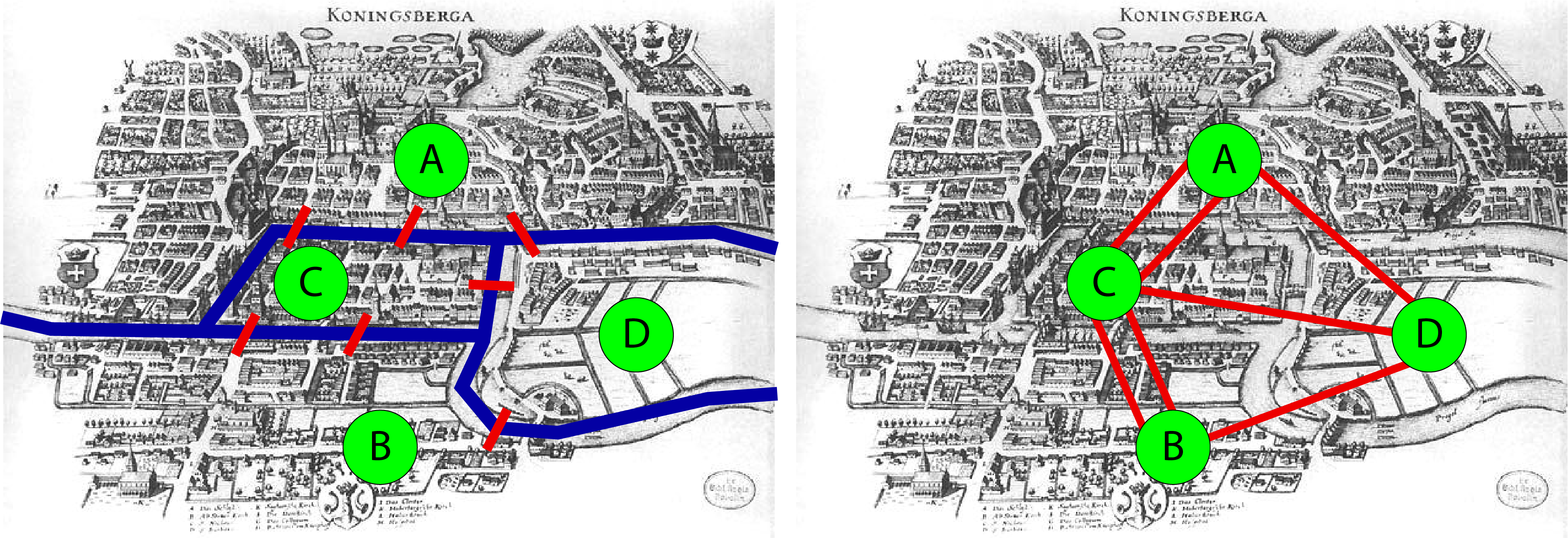Graph studies originate back to Leonhard Euler, a prolific Swiss mathematician who lived in the eighteenth century. In 1735, he published a paper proposing a solution to the Seven Bridges of Königsberg problem. The problem is the following:
Given the city whose geography is depicted in the following image, is there a way to walk across each of the seven bridges of the city once and only once, and return to our starting point?
As you can see, this city is crossed by a river that splits the city into two banks, A and B. The river meander additionally creates two islands, C and D, also part of the city. Those two banks and two islands are connected by a total of seven bridges: two bridges between A and C, two other bridges between C and B, one between C and D, one between B and D, and a last one between D and A:

Euler's reasoning (on the right side) was to reduce this complex geography to the most simple drawing, like the one you can see on the right of the previous image, since the route used within each island is not relevant. Each island then becomes a single point, or node, connected to another by one or several links, or edges, representing the bridges.
With this simple visualization, the mathematician was able to solve the initial problem by noting that, if you arrive at an island (vertex) via one bridge, you will need to leave it using another bridge (except for the start and end vertices). In other words, all vertices but two need to be connected to an even number of relationships. This is not the case in the Königsberg graph, since we have the following:
A: 3 connections (to C twice, and to D once)
B: 3 connections (to C twice, and to D once)
C: 5 connections (to A twice, to B twice and to D once)
D: 3 connections (to A once, to C once and to D once)
This kind of path, where each edge is used once and only once, is called a Eulerian cycle and it can be said that a graph has a Eulerian cycle if and only if all of its vertices have even degrees.

































































